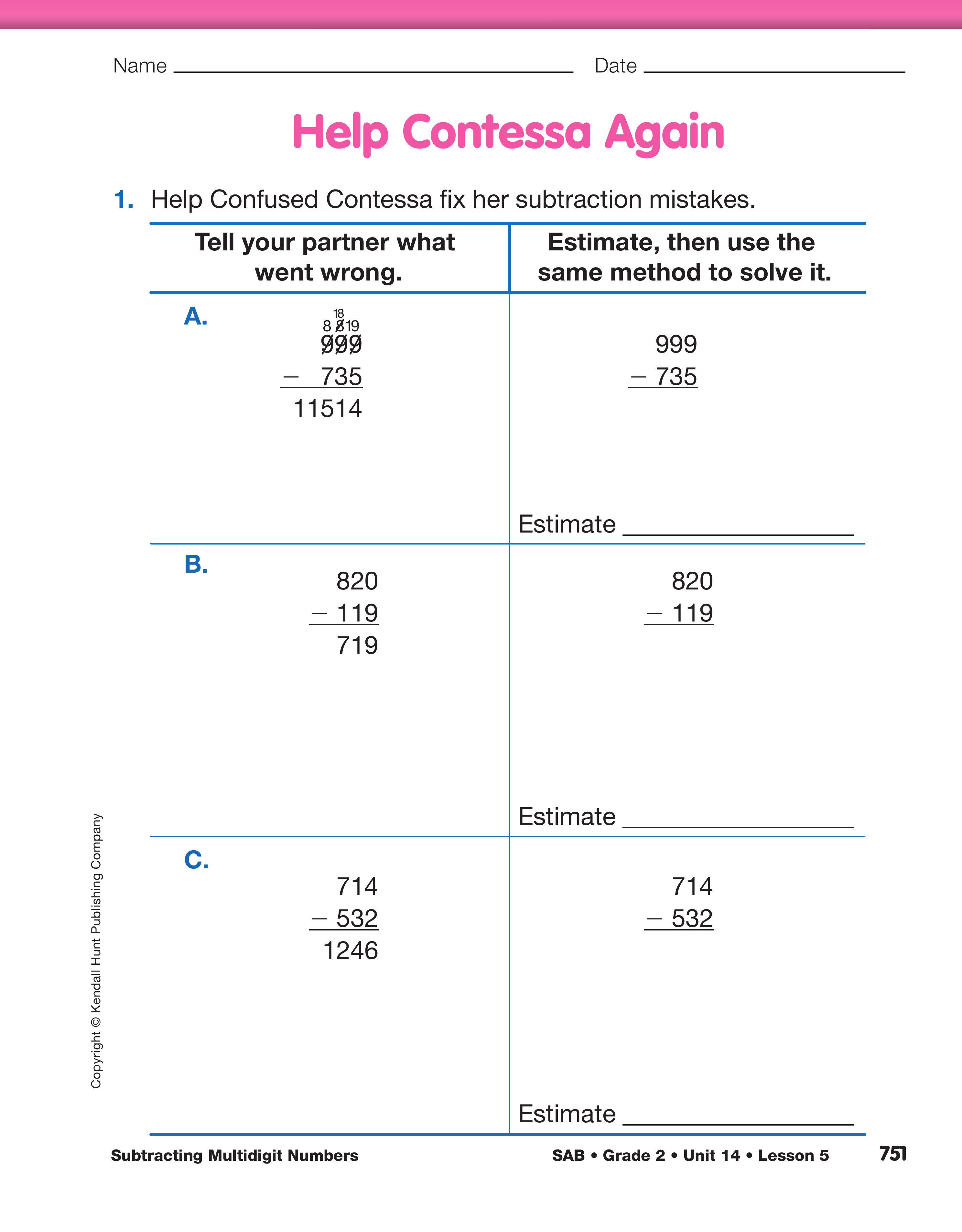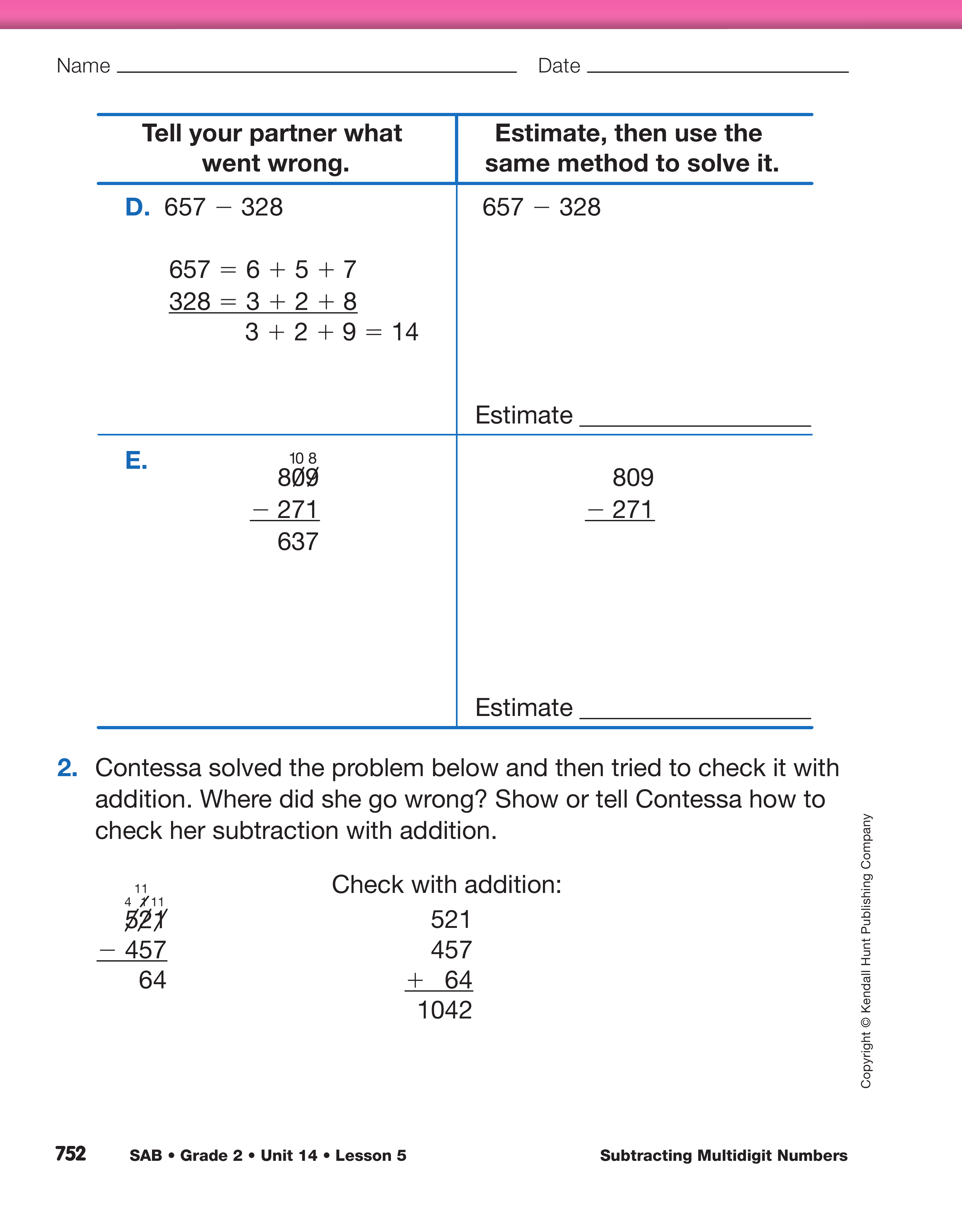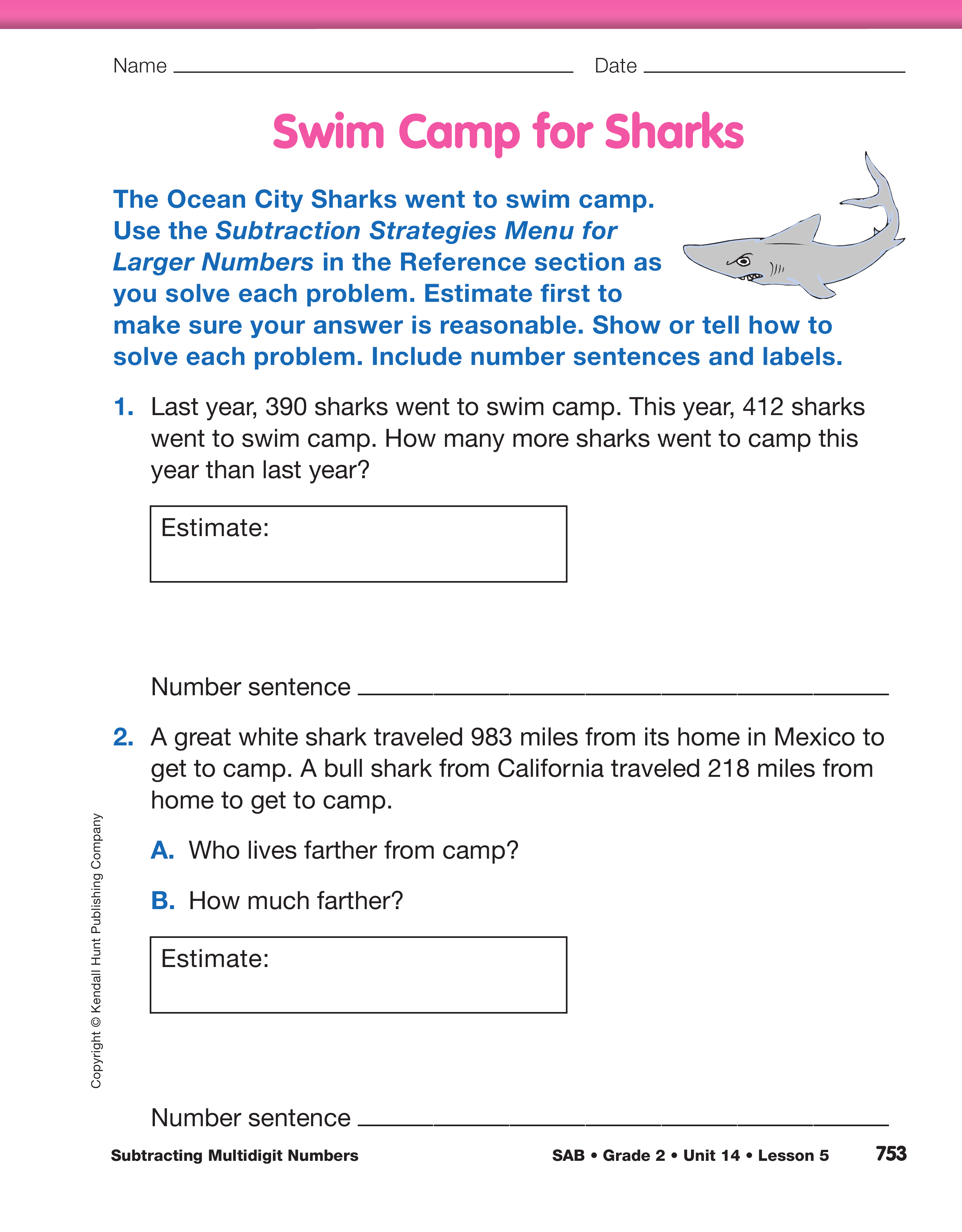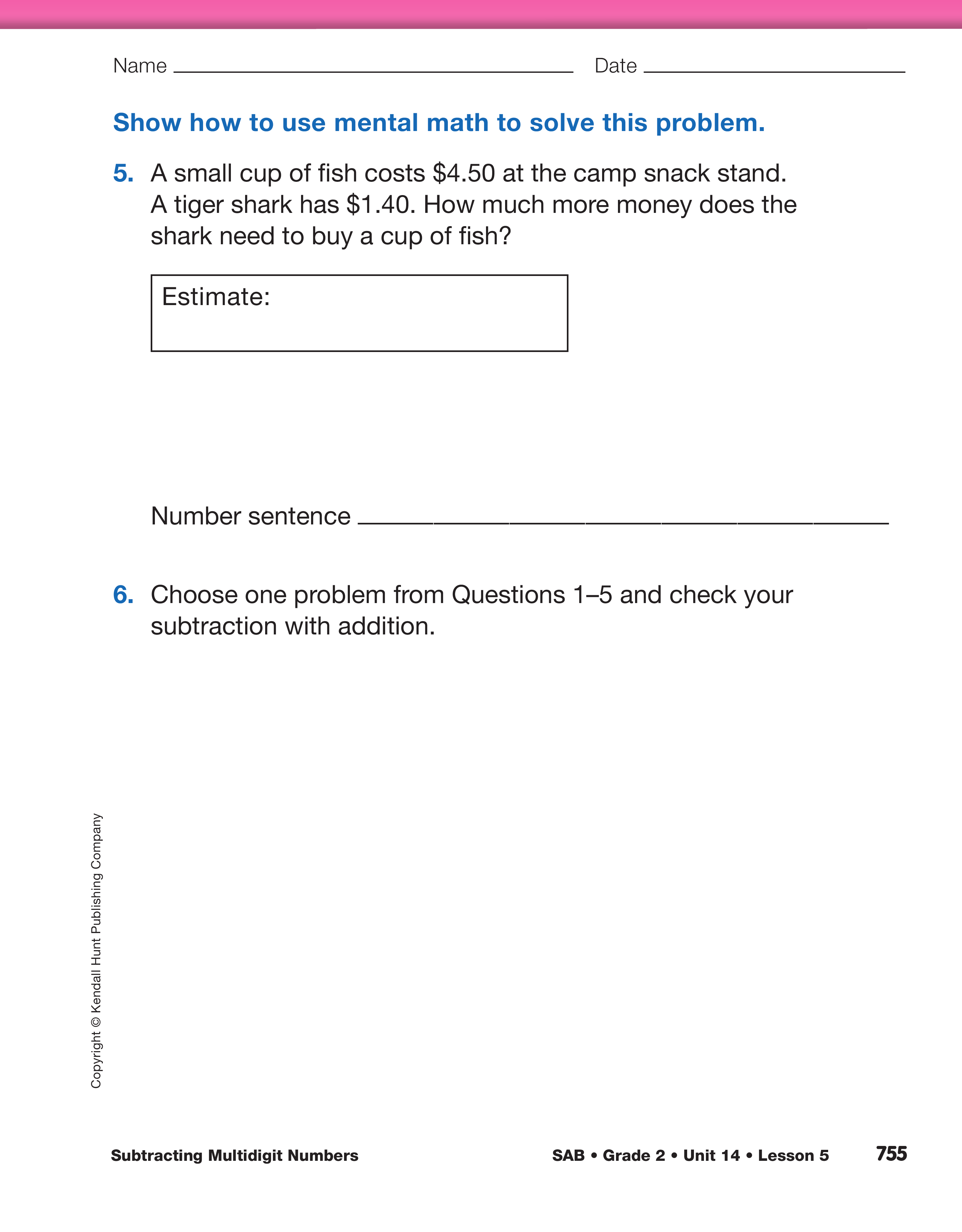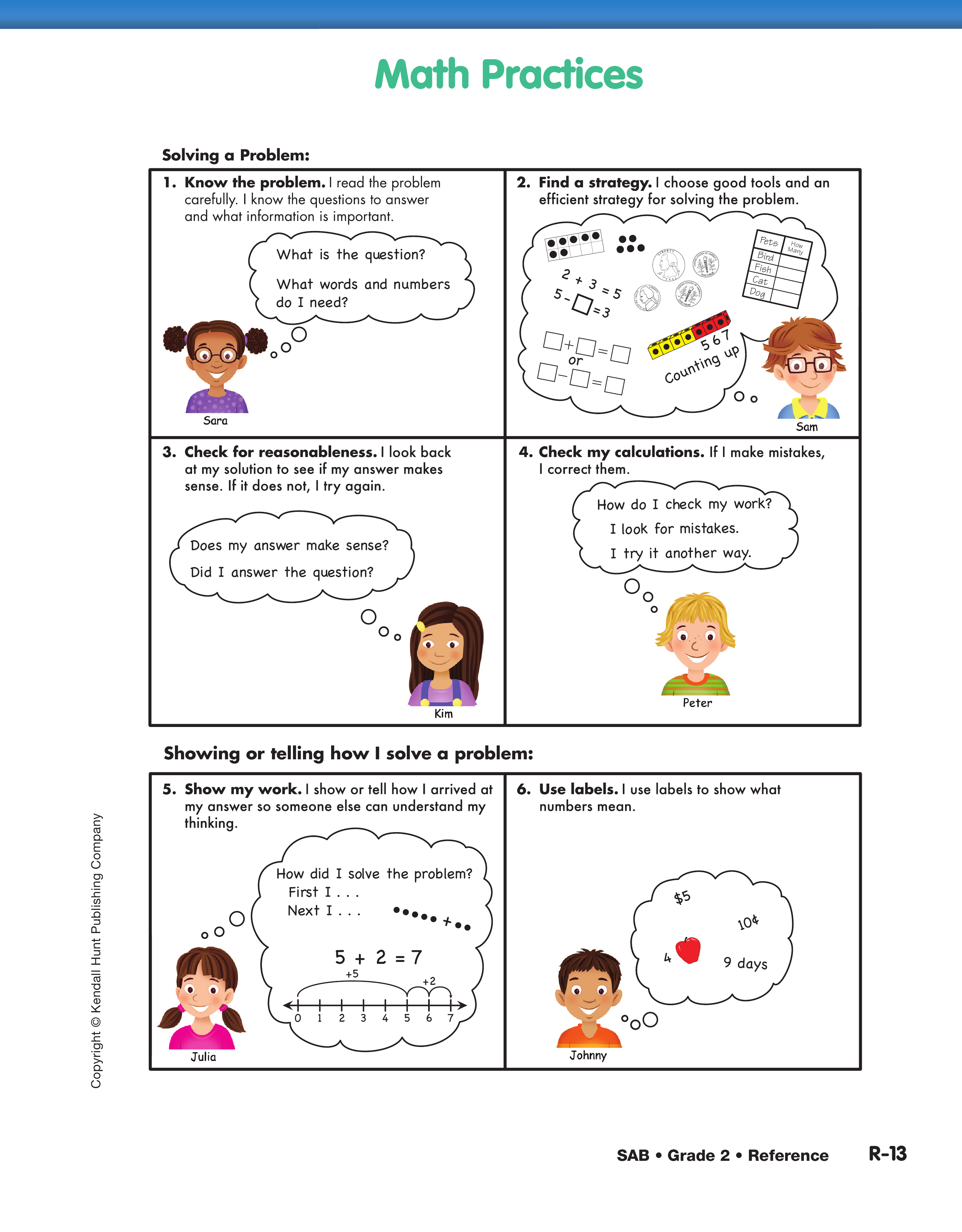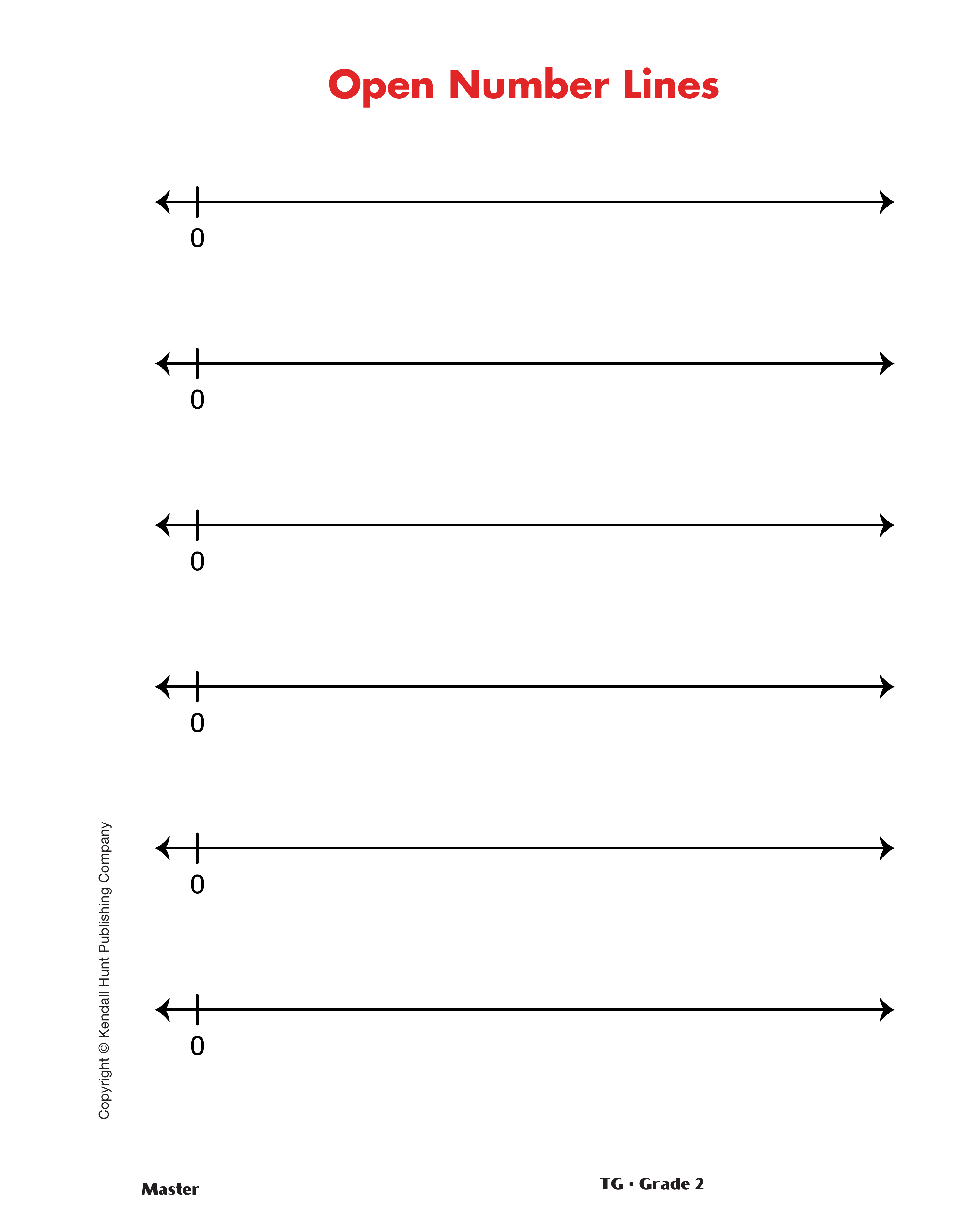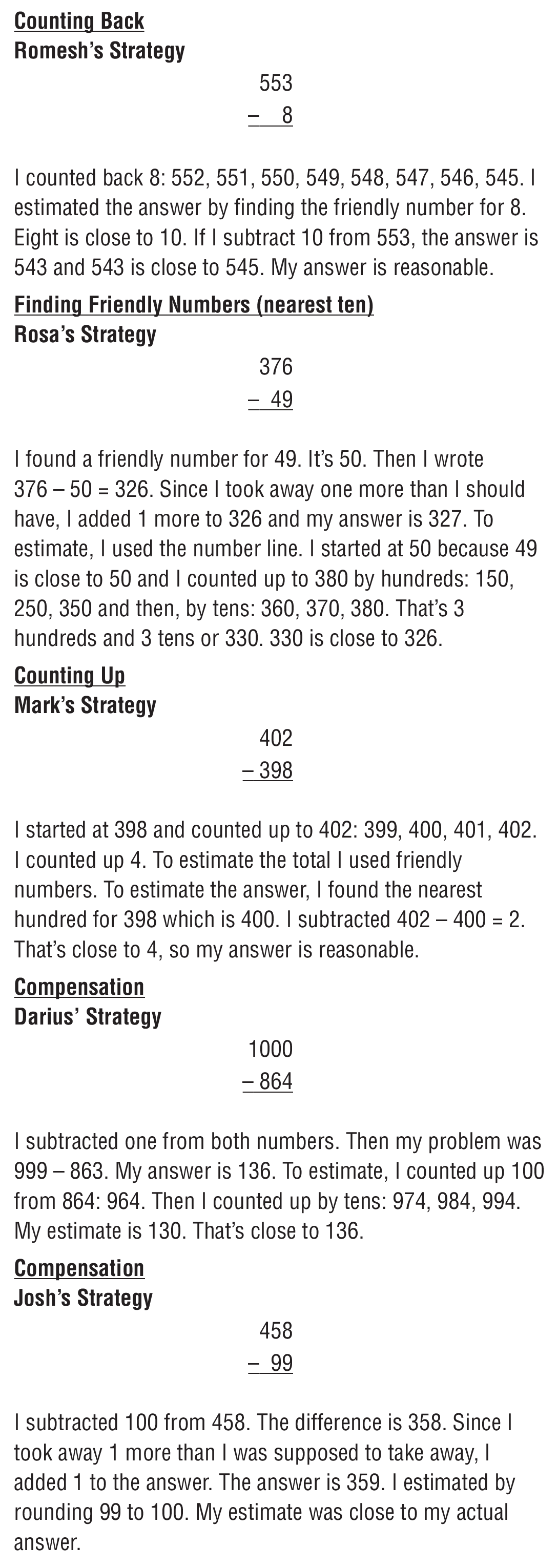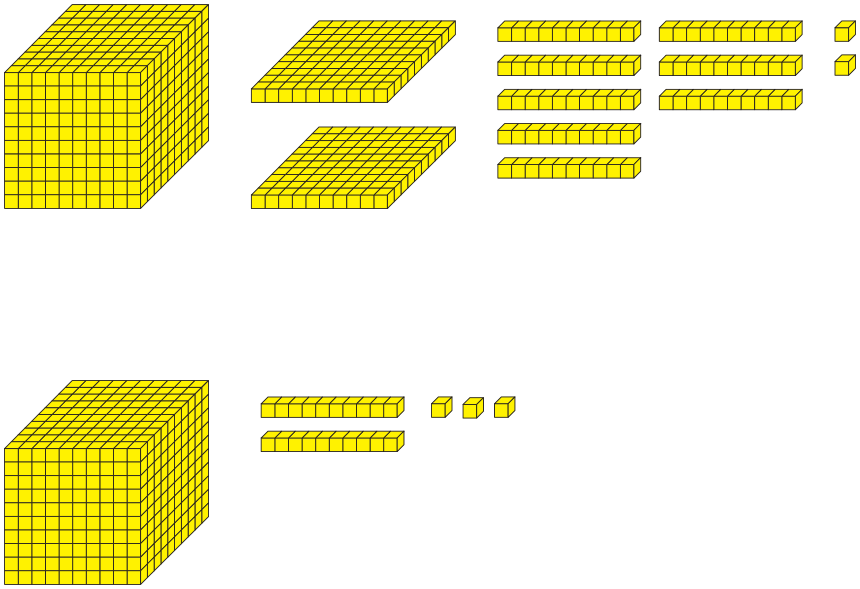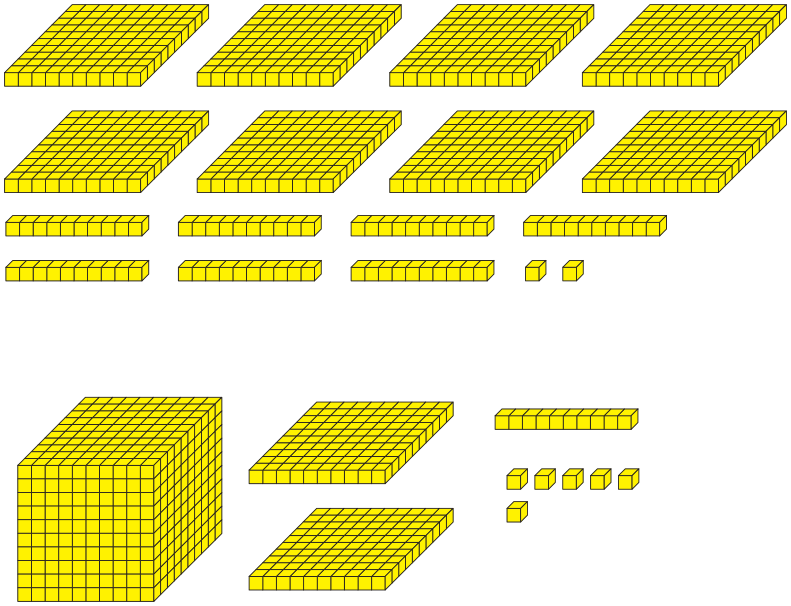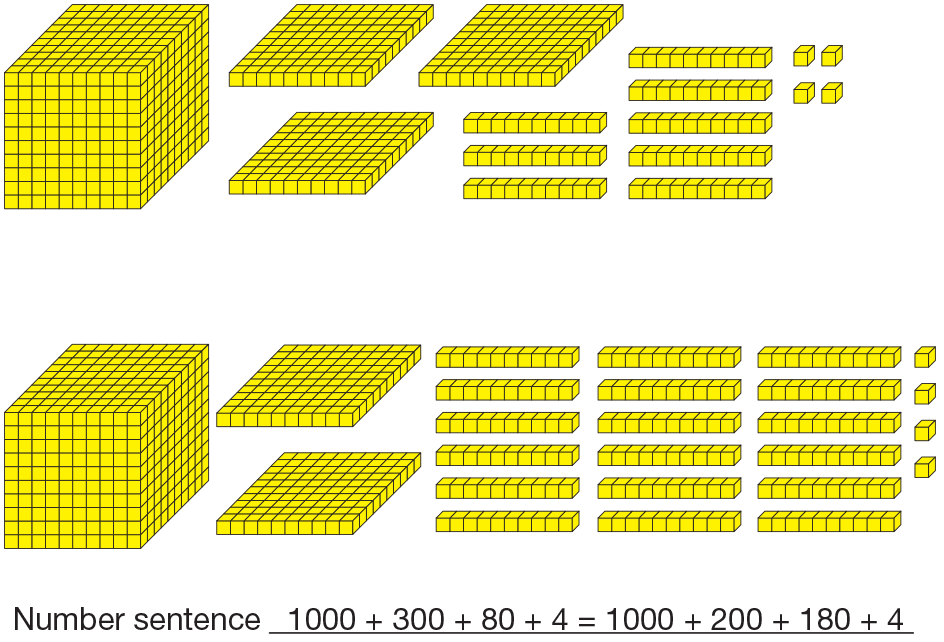Correct Confused Contessa's Subtraction
Mistakes. Display and direct students to the Help
Contessa Again pages from the Student Activity
Book. Explain to the students that Confused
Contessa needs help correcting mistakes she made
while subtracting larger numbers. For each problem,
ask students to estimate the difference and then discuss
Contessa's work with a partner to try to identify
her mistake.
- Can you explain the mistake Contessa made?
- Solve the problem correctly using the same
method Contessa used.
- Show us how to solve the problem correctly.
Discuss the mistakes Contessa made in Questions 1A–E:
- Contessa traded unnecessarily.
- Contessa incorrectly subtracted 9 from 0
instead of trading.
- Contessa added instead of subtracting.
- Contessa made place value and partitioning
mistakes e.g., 657 does not equal 6 + 5 + 7.
- When Contessa could not take 7 tens from 0
tens, she took 1 from the 9 in the ones column
and recorded it as a ten.
Apply Strategies to Solve Word Problems. Display
and direct students' attention to the Math Practices
page in the Student Activity Book Reference section.
As they work on the multidigit subtraction problems
on the Swim Camp for Sharks pages in the Student
Activity Book, students will apply all the Math
Practices Expectations.
- MPE1 is Know the problem. How will you know
what is important when solving these word problems? (Read the problem carefully; think about
what the question is asking and what I need to
find out.)
- MPE2 is Find a strategy. Which tools and strategies
can help you? (the strategies on the Subtraction
Strategies Menu for Larger Numbers, base-ten
pieces, open number lines)
- MPE3 is Check for reasonableness. How does estimating
the difference first help you check for reasonableness? (You can compare your estimate to
your answer to see if it makes sense. If it doesn't,
you can solve it again.)
- MPE4 is Check your calculations. How can you use
addition to check your subtraction calculations? (Add the answer to the amount you took away. If
you get the amount you started with, your answer
is correct.)
- MPE5 is Show my work. What is important to
remember when you are showing or telling how
you arrived at your answer? (It is important to
record my steps clearly so that others can understand
my thinking.)
- MPE6 is Use labels. Look at some of the word
problems. Can you give an example of a label you
might use? (Possible responses: miles, sharks,
laps, dollars)
Tell students to refer to the Subtraction Strategies
Menu for Larger Numbers in the Student Activity
Book Reference section as they complete the word
problems on the Swim Camp for Sharks pages.
Use Check-In: Questions 4–6 with the Feedback Box on the
Swim Camp for Sharks pages in the Student Activity Book to
assess students' abilities to subtract multidigit numbers
using mental math strategies [E6] and paper-and-pencil
methods [E7]; estimate differences [E8]; know the problem
[MPE1]; find a strategy [MPE2]; use estimation to check for
reasonableness [MPE3]; use addition to check calculations
[MPE4]; show work [MPE5]; and use labels [MPE6].














